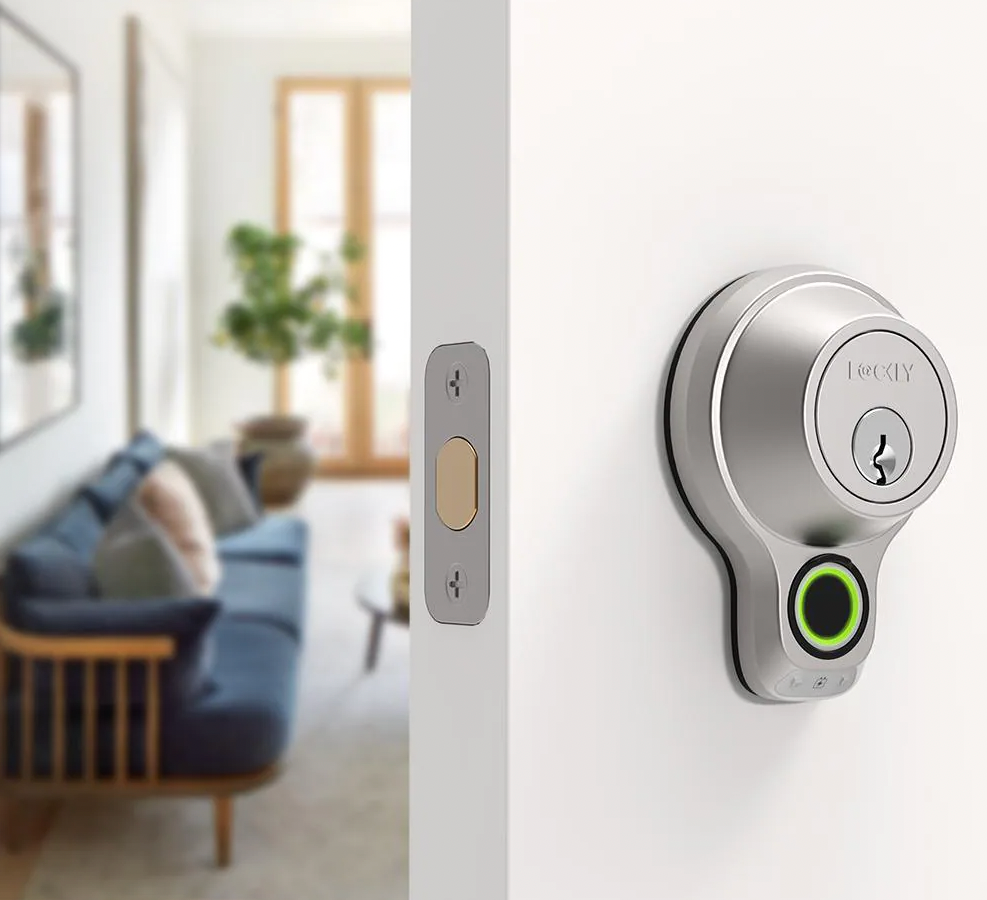
Bluetooth Door Lock
Bluetooth-connected smart locks communicate with a primary device (your smartphone) via Bluetooth. They can also operate with digital keys that you give to other users.
Newer Schlage and Kwikset models work with Apple HomeKit, letting you unlock your door using Siri voice commands. But you’ll still need to be within range of your lock to control it remotely.
Security
In order to take full advantage of the features that smart locks offer, you’ll need a Bluetooth connection between your lock and your smartphone. But some models are only Bluetooth-only, which means you can’t connect them to your home’s Wi-Fi or to a bluetooth door lock smart home hub. This is fine if you don’t need the additional security of being able to monitor your door from afar, but it limits how smart you can make your doors.
Some Bluetooth-only models have a keypad where you can enter a passcode, which can help protect against the possibility of someone else gaining access to your house. They’re also more affordable than other smart locks, and many of them are compatible with existing deadbolts. Yale has a popular Bluetooth-only model called the Assure Lock 2 (about $260), and Kwikset’s second-gen Kevo Bluetooth deadbolt is about $168.
Most of these Bluetooth-only models allow you to create temporary virtual keys that operate at specific times, which is useful for contractors, pet sitters, or anyone else who might need a way in on certain days and times but not others. And they usually support two-way encryption between your lock and the app you use to manage it, which further helps keep hacking attempts at bay. That said, if your lock’s companion mobile app isn’t updated regularly with the latest firmware, it can become vulnerable to hackers.
Convenience
Compared to Wi-Fi models, Bluetooth smart locks require less power and use a smaller battery. They’re a good option for people who want a reliable and simple solution. They also tend to be cheaper and are compatible with a wide range of door types.
These locks are easy to set up and work with an app, allowing you to remotely unlock or lock your home without needing to worry about key fobs or changing the code on your smartphone. Depending on the brand, you may be able to create different passcodes for family members, sitters, contractors and other visitors. These features allow you to keep an eye on who enters your house at all times.
Bluetooth-only models are also more secure than Wi-Fi locks. Since the communication between your lock and smartphone is encrypted, hackers would have to physically be near your home to intercept the signal. Additionally, some Bluetooth models feature a shorter range, meaning that you’ll be within earshot of your door to control it. This makes them a great choice for homeowners who don’t need long distance monitoring or the ability to add extra access codes for guests or caregivers. If you’re planning on buying a Bluetooth model, make sure it uses end-to-end encryption to protect your data and that it has a built-in auto-unlock function when you arrive in range.
Battery Life
Very few homes run electrical wiring right to their doors, so smart locks rely on batteries for power. Many factors affect battery life, including the wireless connectivity integrations and how often you use the lock.
Bluetooth smart locks connect via Bluetooth, a low-energy radio wave that operates over short distances. Some Bluetooth models connect directly to your smartphone, while others require a hub like Z-Wave or SmartThings. Those that need a hub tend to have longer battery lives than those that are direct Bluetooth models.
Most Bluetooth smart locks are compatible with a variety of voice assistants, such as Siri and Alexa. They also allow you to create temporary virtual keys that operate only at certain times. This feature is ideal if you have contractors, dog walkers or babysitters that need to come and go during the day.
Some models are equipped with backup power for emergencies. For example, Yale’s Real Living locks have external posts that you can connect a 9-volt battery to, giving you enough juice to open the door if your phone dies or you lose it. Other models have a traditional key cylinder that you can use if the batteries run out or your connection to your Wi-Fi is down. This is a great option for Airbnb hosts who need to provide guests with alternate entry options.
Installation
Depending on your specific smart lock’s protocol, installation can be easy or challenging. Bluetooth-based locks are one of the most popular bluetooth door lock types because they don’t burn through batteries as quickly as Wi-Fi devices, but your range is limited to about 300 feet.
On the other hand, Z-Wave and Zigbee locks can be used with smart home hubs that speak both protocols, such as SmartThings or Wink, and they can be controlled remotely on your home network. These are also more likely to work with other third-party smart gadgets like light bulbs and doorbells, giving you even more options for creating automations using IFTTT (If This Then That) services.
Wi-Fi enabled smart locks have the most features, including remote access and integration with voice assistants such as Alexa or Google Assistant. Using your smart lock’s app, you can control your lock remotely, create and manage entry codes, add and remove users, and monitor usage.
Wi-Fi-enabled smart locks can also be controlled by your smartphone, tablet, or laptop and some models offer built-in cameras that allow you to see who’s at the door before letting them in. These can be particularly helpful if you have kids or pets who may forget to lock the door. They also often include keypads for guests who don’t have a phone, and some work with Apple HomeKit to unlock the door with Siri.
